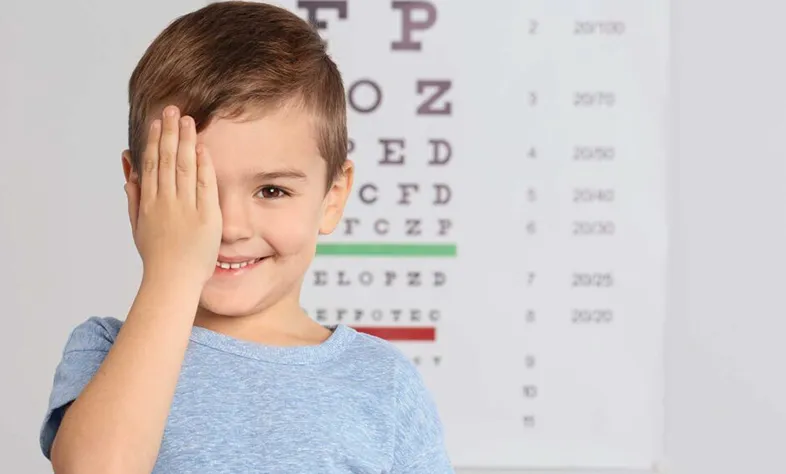The 5 common eye problems among children

Being a child means being in the developmental stage. Their physical health and organs including their eyes are quickly and constantly changing. Being attentive to their growth can help detect eye problems early. And the earlier we diagnose an eye problem, the easier it is to treat.
Amblyopia (lazy eye)
Amblyopia, also known as lazy eye disease, is a common early childhood eye condition in which eyesight does not develop as it should in one eye. This condition occurs when the brain does not provide for both eyes equally, leaving one of them ignored.
Lazy eye is not a problem of the eye but a problem with the connection between the eye and brain. Several factors can cause amblyopia, including a muscle imbalance or eye disease. Blurred vision and poor depth perception are the symptoms of amblyopia.
The earlier the treatment begins, the more effective it will be. Your doctor will either treat the underlying disease or attempt to get the diseased eye to work.
Strabismus (crossed eye, squint)
Strabismus or crossed-eyes is one of the most common eye problems in younger children. In this condition, one or two eyes of the child are seen misaligned.
The four categories of strabismus are:
Symptoms of this condition are:
Diagnosing this condition at the earliest and detecting the underlying reason is essential to prevent vision loss. Various treatments are in use to improve eyesight in crossed-eyes conditions. Using a patch on the stronger eye to increase the strength in the affected eye is one method. Eyeglasses, surgery to straighten the eyes, or eye exercises are also used to treat this condition.
Astigmatism, nearsightedness, and farsightedness astigmatism
Astigmatism makes objects up close and at a distance look blurry. In this condition, the cornea of your eye has an irregular curve. Astigmatism can cause eye strain and can be combined with nearsightedness and farsightedness.
Other symptoms:
Nearsightedness (myopia)
When your child has nearsightedness, they can see objects closer clearly, but objects far away may appear blurry. This condition is very common among children and adults. Children with this condition may have trouble seeing the blackboard at school.
Other symptoms:
Farsightedness (hyperopia)
Farsightedness makes close objects look out of focus. When a child has this condition, they can see distant objects clearly but closer objects will look blurry. Farsightedness is usually present at birth. This condition affects one’s ability to focus on things.
Other symptoms:
Astigmatism, nearsightedness, and farsightedness are the three common refractive errors seen in children. The doctors treat these errors with prescribed eyeglasses or contact lenses.
Paediatric cataracts
Cataracts in children are called paediatric cataracts. As most people may think, cataracts do not affect only adults. A person can get cataracts at any age. Cataracts are the clouding of the eye’s lens.
A child may be born with a cataract (congenital), or it may develop later in life (acquired). Symptoms of cataracts in children:
It is rare, but it is important to detect at the earliest to avoid vision loss. Cataracts in children can cause blindness if they aren’t treated. Children’s eyes and brains are still in the developmental stage. That is why it is crucial to treat cataracts as soon as possible. Otherwise, the brain learns it as the default vision.
Pink eye (conjunctivitis)
Conjunctivitis, commonly known as pink eye, is common among children. It is a mild infection caused by bacteria. This condition isn’t usually serious. Pink eye is the inflammation of the white part of the eye and inner eyelids. In most cases, the pink eye goes away on its own, but some kinds of pink eye require treatment. This condition is highly contagious.
Newborns are at high risk for pink eye, and it requires medical attention to avoid it developing into a serious problem.
Other symptoms:
Even though this condition resolves on its own most of the time, treatment can accelerate the recovery. Eye drops or ointments can do the job most of the time. If the pinkeye does not improve within 2 to 3 days of treatment, or in a week if untreated, call your doctor.
Children’s eyes are precious. Since kids are highly engaged, the chances of them developing eye problems are high. If you notice your child struggling with their eyesight, immediately get medical help as it could indicate underlying diseases. It is also important to schedule regular eye checkups to ensure refractive errors are not present in your child’s eye. Make sure your child is seeing the world in all its glory!